I'm writing PS Script and following block of code shows dialogbox below windows forms gui.
$btn1 = New-Object Windows.Forms.Button
$btn1.Text = "Wybierz folder projektowy"
$btn1.Location = New-Object System.Drawing.Point(170,140)
$btn1.Size = New-Object System.Drawing.Size(160,20)
$btn1.add_Click({
function Select-Folder($message='Select a folder', $path = 0) {
$object = New-Object -comObject Shell.Application
$object.topmost=$true
$folder = $object.BrowseForFolder(0, $message, 0, $path)
if ($folder -ne $null) {
$folder.self.Path
}
}
$folderPath = Select-Folder 'Select the folder where the move scripts reside'
If ($folderPath) {
Set-Content -Path "C:\Projekty\logs\temp_path.txt" -Value $folderPath.ToString() -Encoding Unicode
write-host $folderPath
get-content -Path "C:\Projekty\logs\temp_path.txt"
}
Else { Write-Host 'I do not have a folder path' }
})
$form_acl.Controls.Add($btn1)
Is there any way to make it display on top? Here's screenshot of a problem:
